Risotto – Better prepared In U.S. than any Pasta dish. I have no idea why this is, but, I can guess.
For one, Risotto is surprisingly easy to make. Despite all the hoopla and magic surrounding it any fifth grader can prepare Risotto with ease. Another reason is that Americans are accustomed to eating steamed rice. That’s much chewier than boiled rice. Most Pasta experiences Americans have are overcooked versions. That lends itself to bland, gooey aberrations of traditional flavors.
Risotto lends itself to endlessly different flavor combinations. The delicious, creamy, yet nutty blandness of Arborio rice is a perfect transfer medium. Growing up my favorite Risotto was one my mother, Lucrezia, made. She used Asparagus, pancetta (bacon), and Gruyere Cheese in the Risotto.
Here’s how to make Lucrezia’s incredible Risotto with Asparagus, Bacon, and Gruyere Cheese:
Asparagus Risotto – serves 6 people
- Asparagus – 2 large bunches
- Bacon – 1lb. plain, non-smoked
- 2 cups Arborio Rice
- 2 Medium White Onions – chopped very fine
- Gruyere Cheese – 1/2 lb. grated
- Sea Salt
- Black Pepper
Broil the pound of bacon in a drip pan until crunchy brown. Set aside on paper towels and let dry. Save all the drippings.
Boil one bunch of asparagus in about two quarts of water until very soft. Takes about 15 minutes. Remove the hard, tough ends with a knife before cooking. Remove and drain well. SAVE all the cooking water and the drained water.
Next, blend or food process the overcooked asparagus until you have a nice smooth slurry of asparagus. Add some of the cooking water, OR STOCK, if necessary to get a smooth, runny mix.
In a large pan (the more surface area the faster and better the Risotto will cook). Over a high heat, sauté the two medium onions and the 2 cups of Arborio Rice. Sauté them in some of the bacon drippings until golden brown, stirring the whole time.
Pour in the blended asparagus and begin stirring the rice. Add two or three large cooking spoons of the asparagus cooking water as needed. Stir until it is absorbed by the rice mixture.
 Add a few pinches of sea salt and plenty of coarse black pepper. Do this as you continue to stir. Make sure not to over salt the mix.
Add a few pinches of sea salt and plenty of coarse black pepper. Do this as you continue to stir. Make sure not to over salt the mix.
Keep adding asparagus STOCK to the rice. It needs to reach a tender, but still firm texture. And has thrown off its creamy starchiness to the mix.
Then add the second bunch of asparagus. Be sure to trim all the tough end pieces and cut up into two inch sections. Stir the chopped, fresh asparagus in for about two or three minutes. Stir until tender, using a spoonful or two of cooking water if necessary.
Just before serving crumble up the crunchy bacon into bits and add to the mix. Then add the 1/2 lb. of grated Gruyere Cheese to the Risotto and stir. Top each serving with a spoonful of bacon drippings and additional grated Gruyere. Serve immediately as the dish will continue to cook while it sits.
Entrepreneur and Raconteur. Has taken Kyle Phillips (former Principle/Blogger for the About.com
Guide to Italian Food) to task on several supposedly “authentic” Italian recipes.
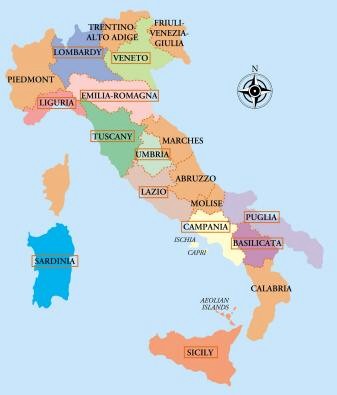 Despite its tiny size, Italy has a number of disparately different climates. That’s good for growing specific food crops in each of the climates. Climates range from desert hot in Sicily in the south to mountainous cold in Torino in the north. Regional dishes like Pasta and Eggplant are deeply influenced by Italy’s various climates.
Despite its tiny size, Italy has a number of disparately different climates. That’s good for growing specific food crops in each of the climates. Climates range from desert hot in Sicily in the south to mountainous cold in Torino in the north. Regional dishes like Pasta and Eggplant are deeply influenced by Italy’s various climates.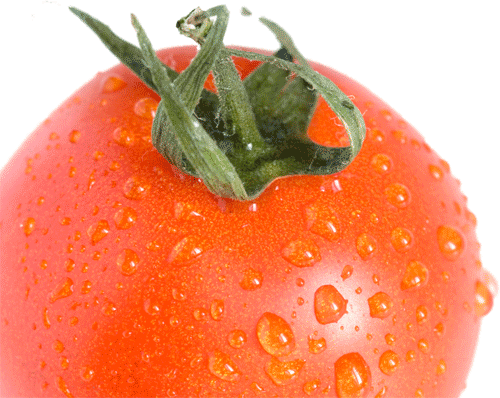 Also, Pasta itself is an essential part of the Mediterranean diet. A recent analysis of The Mediterranean Diet, using the NHS as a basis, concluded that it reduced the risk of heart attack almost 30% and strokes by 13% as compared to conventional diets. Furthermore, study participants whose diets most closely matched the Mediterranean diet, that includes Pasta, were typically very healthy. And had a 39% reduction in combined coronary heart disease and stroke mortality. That’s compared to women whose diets least matched it. Teresa T. Fung, Sc.D., lead author of the Mediterranean diet study and associate professor at Simmons College and adjunct associate professor in nutrition at Harvard was quoted: “Those are dramatic results. We found that women whose diets look like the Mediterranean diet are not only less likely to die from heart disease and stroke, but they are less likely to have those diseases.”
Also, Pasta itself is an essential part of the Mediterranean diet. A recent analysis of The Mediterranean Diet, using the NHS as a basis, concluded that it reduced the risk of heart attack almost 30% and strokes by 13% as compared to conventional diets. Furthermore, study participants whose diets most closely matched the Mediterranean diet, that includes Pasta, were typically very healthy. And had a 39% reduction in combined coronary heart disease and stroke mortality. That’s compared to women whose diets least matched it. Teresa T. Fung, Sc.D., lead author of the Mediterranean diet study and associate professor at Simmons College and adjunct associate professor in nutrition at Harvard was quoted: “Those are dramatic results. We found that women whose diets look like the Mediterranean diet are not only less likely to die from heart disease and stroke, but they are less likely to have those diseases.”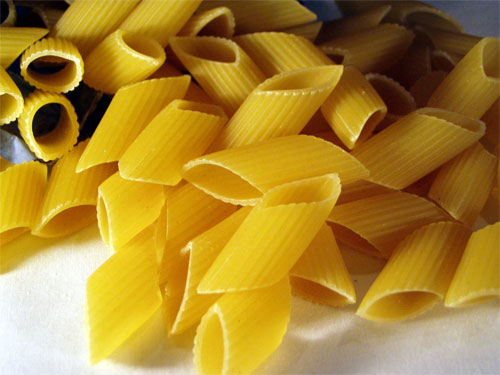 In a perfect world it is every cook or chef’s dream to walk out the back door of their kitchen and harvest, with their own hands, all of the ingredients for the meals they prepare. At one time, even in the U.S. this was a distinct possibility. According to the U.S. Department of Agriculture the number of farms peaked in 1935 at 7 million. By 1997 that number had fallen to 1.7 million. This meant that locally grown, harvested that day food, is fewer and farther between everywhere in the U.S.
In a perfect world it is every cook or chef’s dream to walk out the back door of their kitchen and harvest, with their own hands, all of the ingredients for the meals they prepare. At one time, even in the U.S. this was a distinct possibility. According to the U.S. Department of Agriculture the number of farms peaked in 1935 at 7 million. By 1997 that number had fallen to 1.7 million. This meant that locally grown, harvested that day food, is fewer and farther between everywhere in the U.S.
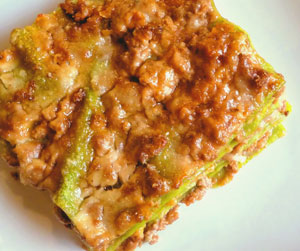
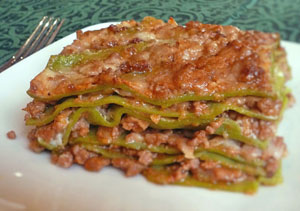
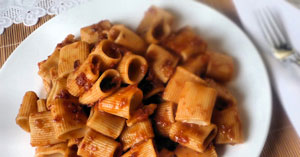 It may be further enriched with the addition of unseasoned butcher’s knife-chopped pork sausages. And large beef and pork skin rolls bound up with string. After being filled with chopped parsley, garlic, pine nuts, raisins and cheese shavings. A truly magnificent feast!
It may be further enriched with the addition of unseasoned butcher’s knife-chopped pork sausages. And large beef and pork skin rolls bound up with string. After being filled with chopped parsley, garlic, pine nuts, raisins and cheese shavings. A truly magnificent feast!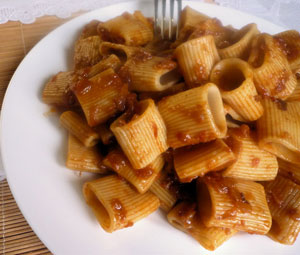 This sumptuous pasta sauce needs a good chunky pasta to do it justice. Use it to crown a large format tube pasta like Paccheri, Rigatoni or Mezze Maniche. Never use pasta like Spaghetti or Fettuccine. The meats you return to the pasta sauce to re-heat. Then you keep them warm while eating the pasta. And serve as the second course along with poached broccoli or other seasonal vegetables. But never eat potatoes after pasta.
This sumptuous pasta sauce needs a good chunky pasta to do it justice. Use it to crown a large format tube pasta like Paccheri, Rigatoni or Mezze Maniche. Never use pasta like Spaghetti or Fettuccine. The meats you return to the pasta sauce to re-heat. Then you keep them warm while eating the pasta. And serve as the second course along with poached broccoli or other seasonal vegetables. But never eat potatoes after pasta.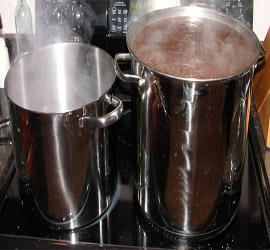 Most pasta packages recommend that you boil spaghetti for a certain number of minutes. In almost every case, if it’s written in English, you will be told to boil spaghetti way beyond it’s AL DENTE phase. Why? Because most Americans are used to pre-cooked pasta at restaurants. It’s prepared hours in advance (gag!) and placed in a refrigerator to be reheated with your chosen sauce when you order. Or, they are accustomed to (Oh my God, no) canned pasta products. So, use the cooking time as a very rough guide. But the key to perfect pasta is to drain it the minute it begins to fold easily. It MUST have a bit of crunchiness to it. The only way you can boil spaghetti to perfection is to keep an eye on it. Stir it regularly as it boils and test it with a fork or spoon. Remember, once you drain it the pasta will keep cooking on its own. By the time you add it to your sauce or accompaniment, over a moderate heat in a pan, it continues to cook as well. This technique is called “in padella” . Meaning “in the pan,” in Italian.
Most pasta packages recommend that you boil spaghetti for a certain number of minutes. In almost every case, if it’s written in English, you will be told to boil spaghetti way beyond it’s AL DENTE phase. Why? Because most Americans are used to pre-cooked pasta at restaurants. It’s prepared hours in advance (gag!) and placed in a refrigerator to be reheated with your chosen sauce when you order. Or, they are accustomed to (Oh my God, no) canned pasta products. So, use the cooking time as a very rough guide. But the key to perfect pasta is to drain it the minute it begins to fold easily. It MUST have a bit of crunchiness to it. The only way you can boil spaghetti to perfection is to keep an eye on it. Stir it regularly as it boils and test it with a fork or spoon. Remember, once you drain it the pasta will keep cooking on its own. By the time you add it to your sauce or accompaniment, over a moderate heat in a pan, it continues to cook as well. This technique is called “in padella” . Meaning “in the pan,” in Italian.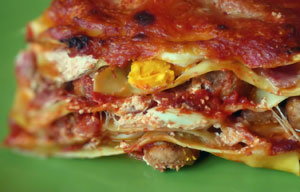 This recipe has three elements. (1) The Ragù recipe, which should be a classic Naples Ragù recipe. But made only with pork meats and sausages. (2) The Pasta recipe, ideally using durum wheat rippled Lasagna sheets. (3) The Filling recipe. That always includes little meatballs, ricotta and sliced hard boiled eggs. It also includes a grating cheese for the top. And either the fresh Naples sausages called “Cervellatine” or else spicy Napoli Salami, but never both. The Lasagna Napoletana recipe can also include sliced Mozzarella. Although it must be cows’ milk labeled Fior di Latte. It must not be Mozzarella di Bufala. That’s too watery to use in the recipe. You can play with these recipe elements. Then make your Lasagna Napoletana as you prefer adding more of this and less of that. You can omit the eggs. Or you can use a simple
This recipe has three elements. (1) The Ragù recipe, which should be a classic Naples Ragù recipe. But made only with pork meats and sausages. (2) The Pasta recipe, ideally using durum wheat rippled Lasagna sheets. (3) The Filling recipe. That always includes little meatballs, ricotta and sliced hard boiled eggs. It also includes a grating cheese for the top. And either the fresh Naples sausages called “Cervellatine” or else spicy Napoli Salami, but never both. The Lasagna Napoletana recipe can also include sliced Mozzarella. Although it must be cows’ milk labeled Fior di Latte. It must not be Mozzarella di Bufala. That’s too watery to use in the recipe. You can play with these recipe elements. Then make your Lasagna Napoletana as you prefer adding more of this and less of that. You can omit the eggs. Or you can use a simple 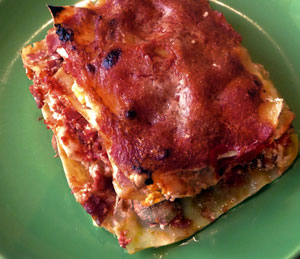 Lasagna improves with waiting. It likes time for the flavors to blend and the elements to settle. Some make the recipe a day or two ahead and reheat by covering and steaming. Others simply leave it to wait in the turned off oven. Sometimes for two, even three hours before serving. Lasagna Napoletana is best savored when eaten just warm, not hot.
Lasagna improves with waiting. It likes time for the flavors to blend and the elements to settle. Some make the recipe a day or two ahead and reheat by covering and steaming. Others simply leave it to wait in the turned off oven. Sometimes for two, even three hours before serving. Lasagna Napoletana is best savored when eaten just warm, not hot.
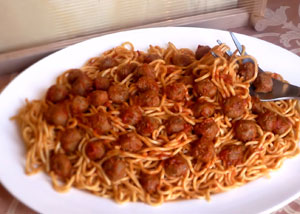
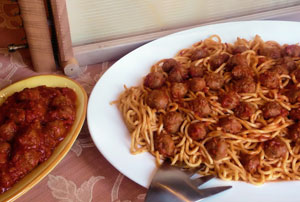 If you can buy packaged Spaghetti (alla Chitarra) for this spaghetti and meatballs recipe, great. If not, use Linguine. Or use your own dough recipe. And roll it out no thinner than the third setting on the pasta machine. And cut it into ribbons using the narrower setting. For this spaghetti and meatballs recipe, you really must keep the meatballs very small. Some would say no bigger than the finger nail on your little finger. That’s the secret for coming close to the authentic original Abruzzo dish, “Maccherone con le Pallotte”. And this spaghetti and meatballs recipe gets very close to the original.
If you can buy packaged Spaghetti (alla Chitarra) for this spaghetti and meatballs recipe, great. If not, use Linguine. Or use your own dough recipe. And roll it out no thinner than the third setting on the pasta machine. And cut it into ribbons using the narrower setting. For this spaghetti and meatballs recipe, you really must keep the meatballs very small. Some would say no bigger than the finger nail on your little finger. That’s the secret for coming close to the authentic original Abruzzo dish, “Maccherone con le Pallotte”. And this spaghetti and meatballs recipe gets very close to the original.